
The Irish Republican Army was an Irish republican revolutionary paramilitary organisation. The ancestor of many groups also known as the Irish Republican Army, and distinguished from them as the "Old IRA", it was descended from the Irish Volunteers, an organisation established on 25 November 1913 that staged the Easter Rising in April 1916. In 1919, the Irish Republic that had been proclaimed during the Easter Rising was formally established by an elected assembly, and the Irish Volunteers were recognised by Dáil Éireann as its legitimate army. Thereafter, the IRA waged a guerrilla campaign against the British occupation of Ireland in the 1919–1921 Irish War of Independence.

The Irish War of Independence, also known as the Anglo-Irish War, was a guerrilla war fought in Ireland from 1919 to 1921 between the Irish Republican Army and British forces: the British Army, along with the quasi-military Royal Irish Constabulary (RIC) and its paramilitary forces the Auxiliaries and Ulster Special Constabulary (USC). It was part of the Irish revolutionary period.
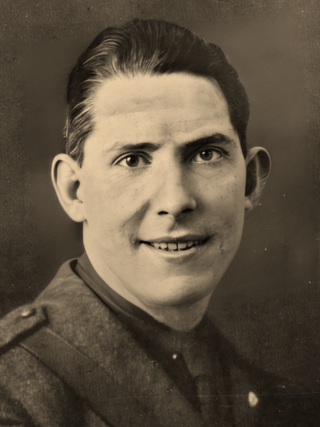
Seán Mac Eoin was an Irish republican and later Fine Gael politician who was Minister for Defence briefly in 1951 and from 1954 to 1957, and Minister for Justice from 1948 to 1951. He had been Chief of Staff of the Defence Forces from February 1929 to October 1929. He served as a Teachta Dála (TD) from 1921 to 1923 and from 1929 to 1965.
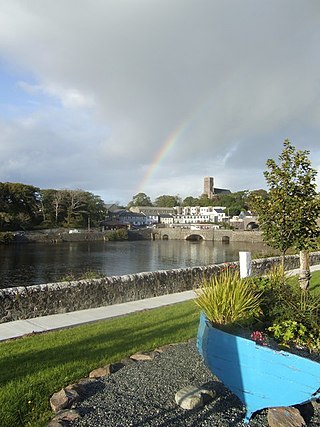
Newport, historically known as Ballyveaghan and for many years also known as Newport-Pratt, is a small town in the barony of Burrishoole, County Mayo, Ireland. The population was 626 in 2016. It is located on the west coast of Ireland, along the shore of Clew Bay, north of Westport. The N59 road passes through the town. The county town of Castlebar is approx 18 km east of Newport. The Black Oak River flows through the centre of the town and there are walking paths along its banks.
The Carrowkennedy ambush was an ambush carried out by the Irish Republican Army (IRA) on 2 June 1921, during the Irish War of Independence. An IRA flying column, commanded by Michael Kilroy, ambushed a mobile patrol of the Royal Irish Constabulary including Black and Tans recruits at Carrowkennedy, near Westport, County Mayo. It resulted in the deaths of seven of the RIC, including some who were killed by their own rifle grenade. After two hours the RIC surrendered and their weaponry and ammunition were seized by the IRA.
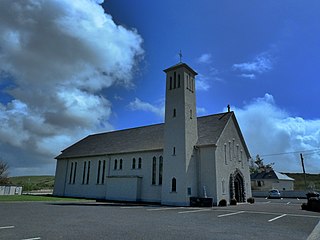
Kilmeena is a civil parish and small village near Westport in County Mayo, Ireland. The area is served by a Roman Catholic church, an An Post post office, and a national (primary) school.
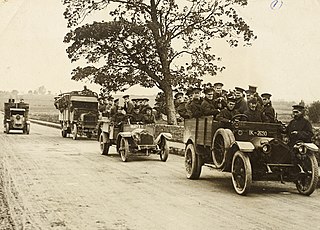
This is a timeline of the Irish War of Independence of 1919–21. The Irish War of Independence was a guerrilla conflict and most of the fighting was conducted on a small scale by the standards of conventional warfare.
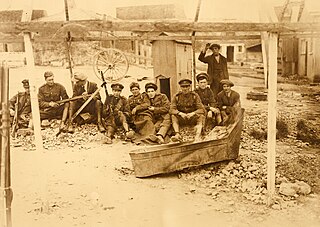
The Irish Free State offensive of July–September 1922 was the decisive military stroke of the Irish Civil War. It was carried out by the National Army of the newly created Irish Free State against anti-treaty strongholds in the south and southwest of Ireland.
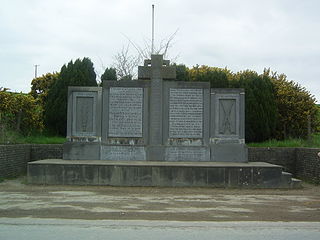
The Crossbarry ambush, also known as the Battle of Crossbarry, occurred on 19 March 1921 and was one of the largest engagements of the Irish War of Independence. It took place near the small village of Crossbarry in County Cork, about 20 km south-west of Cork city. About a hundred Irish Republican Army (IRA) volunteers, commanded by Tom Barry, escaped an attempt by about 1,200 British troops to encircle them. During the hour-long battle, ten British troops and three IRA volunteers were killed.
This is a timeline of the Irish Civil War, which took place between June 1922 and May 1923. It followed the Irish War of Independence (1919–1921), and accompanied the establishment of the Irish Free State as an entity independent from the United Kingdom of Great Britain and Ireland.
The Scramoge ambush was an ambush carried out by the Irish Republican Army (IRA) on 23 March 1921, during the Irish War of Independence. The IRA ambushed a lorry carrying British troops and Royal Irish Constabulary (RIC) officers at Scramoge, near Strokestown in County Roscommon. Three British soldiers and an RIC officer were killed, while two RIC 'Black and Tans' were captured and shot dead shortly after.
The Clonfin Ambush was an ambush carried out by the Irish Republican Army (IRA) on 2 February 1921, during the Irish War of Independence. It took place in the townland of Clonfin between Ballinalee and Granard in County Longford. The IRA ambushed two lorries carrying members of the British Auxiliary Division, sparking a lengthy gun battle in which four Auxiliaries were killed and eight wounded. The Auxiliaries eventually surrendered and their weapons were seized. The IRA commander, Seán Mac Eoin, won some praise for helping the wounded Auxiliaries. Following the ambush, British forces burned a number of houses and farms in the area, and shot dead an elderly farmer.
The Sheemore ambush was an ambush carried out by the Irish Republican Army (IRA) on 4 March 1921, during the Irish War of Independence. It took place at Sheemore near Carrick-on-Shannon, County Leitrim.
Maurice Moore was an Irish republican who fought in the Irish War of Independence. In April 1921 Moore was executed in the military prison of Victoria Barracks after being captured in the aftermath of the Clonmult Ambush.

Michael Kilroy was an Irish republican and politician. He was an Irish Republican Army (IRA) officer in his native County Mayo during the Irish War of Independence and Irish Civil War. Subsequently, he was a Sinn Féin and later Fianna Fáil Teachta Dála (TD) for Mayo South.
The Clonmult ambush took place on 20 February 1921, during the Irish War of Independence.
The Rineen ambush was an ambush carried out by the Mid Clare Brigade of the Irish Republican Army (IRA) on 22 September 1920, during the Irish War of Independence. The attack took place at Drummin Hill in the townland of Drummin, near the hamlet of Rineen, County Clare.
The Dromkeen ambush took place on 3 February 1921, during the Irish War of Independence, at Dromkeen in County Limerick. The Irish Republican Army (IRA) ambushed a Royal Irish Constabulary (RIC) patrol, killing 11 policemen.
The Holywell ambush was an ambush on the Ballyhaunis to Claremorris road near Holywell in the early hours of Monday, 2 August 1920 carried out by the Irish Republican Army (IRA) during the Irish War of Independence. Approximately 20 local IRA volunteers commanded by Patrick Kenny attacked a British Military detachment that was guarding a broken down petrol lorry.
The Battle of Newport was an engagement in the Irish Civil War. The Free State forces ousted the Republicans from Newport and Michael Kilroy was captured. However, most of the Anti-treaty forces escaped.








